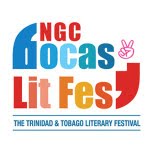Trinidad is a beautiful but troubled country. What's the role of the poet here?
Asami Nagakiya. Illustration by Christopher Lou-Hing.
Voices Carry, by Mervyn Taylor
(Shearsman, ISBN 9781848614970, 100 pp)
Everyone Knows I Am A Haunting, by Shivanee Ramlochan
(Peepal Tree Press, ISBN 9781845233631, 72 pp)
SOME questions about the role of the poet came to mind when I was reading two recently published poetry collections by Trinidadian authors. In my view these books demonstrate the importance of the poet having the freedom to be socially engaged. Mervyn Taylor’s Voices Carry and Shivanee Ramlochan’s Everyone Knows I Am A Haunting respond, each in their own way, to issues plaguing our society.
I know both authors. My third book Pitch Lake is dedicated to Taylor; and was recently reviewed by Ramlochan. I would not want to pretend to review these titles as an independent critic might. Instead, I refer to both books as part of an overall argument about the right of the poet to speak out in the manner of their choosing.
Let me be clear. The poet has no duty to anyone.
Yet, no poet lives in a vacuum. Each is a product of a society or societies. Though we sometimes disagree on what poetry is, we do not quibble over who poetry is for. It is meant for an audience. That audience, too, is comprised of sentient individuals: beings whose lives have been colored by factors that shape our understanding of the world. On this pulsing theatre stage, what is the place of the poet?
 |
| Poet Mervyn Taylor. Photo by Andre Bagoo. |
At the very least, poets who choose to directly engage with the issues of their time; who seek to express truths; who sincerely advocate for justice and equality should not be vilified. Nor should their work be, for these reasons, deemed inferior or dismissed as simplistic. Plato and Socrates questioned virtue, but poetry reassembles it with both crystal-clear water AND mud. Remember, poetry is a true democracy.
It is often said in debates about poetry that the idea of a poet having an agenda is distasteful or distracting. But it is not about the poet having an agenda. It is about the poet having the freedom to express their moral conscience. It is about an individual’s willingness not to turn a blind eye to suffering. A desire to express our dream for a better world, presenting the world in all of its beauty and its ugliness. If a poet is dismissed as being fashionable due to her awkward quality of having integrity, then so be it.
Taylor’s previous books include The Waving Gallery, No Back Door, and Gone Away. Like these works, Voices Carry examines the shifting individual, moving across boundaries and time, coming to terms with bitter social realities. The collection is nostalgic about the past, in love with memory, drunk on music and literature, ever mindful of the shifting times; the changing world. His poems achieve great clarity but not at the expense of freshness. They feel like fables but are completely modern. If at times they veer into the surreal, that is because life in Trinidad and Tobago is surreal (consider ‘Blue Lights’, ‘Bad Dream’).
Crime is the villain of theses poems, stalking them, made more horrific by how Taylor casually incorporates suffering. In ‘Alma’s Advice’ he writes:
Who are the boys we’ll root for,
when they’re all dead or gone away?
Where is the cluster of houses
We’ll indicate with a wave,
meaning where we grew up, where
we had our first glimpse of secret
flesh, covered with fur.
But for all the fine poems, it is ‘A Kind of Valentine’ that lingers in the mind long after we close this book. Taylor writes of murdered Japanese steel pan player Asami Nagakiya, found dead on Ash Wednesday, 2016, in her Carnival costume. The poet gives us, “the Carnival that so went to a man’s/ head, he tried to hide her/ among the yellow blossoms”. The concluding lines:
I will walk you round this Savannah…
I will show you where not to go at night. But
I cannot help during the day, when
it is bright, and a hundred thousand people
offer invites, and behind the masks, men
are not always who they say they are.
In this book, voices bring us news. They carry—meaning they go far and wide; they endure. They carry—meaning they contain multitudes, bring us gifts.
 |
| Shivanee Ramlochan at painter Che Lovelace's studio in Macqueripe. Photo by Andre Bagoo. |
In a similar vein, Ramlochan’s rich debut, Everyone Knows I Am A Haunting preaches truth. There is a sense of a poet luxuriating in language. Elegant lines are dipped in Gothicism and folklore; incandescent monologues are spiked by the poet’s imperatives. There is the play of magic realism, the personal is made mythological yet the sense of intimacy, of secrets being revealed remains. In this way social concerns, such as those relating to gender and violence, are woven into a beautiful tapestry. Ramlochan’s mosaic leaves us with the bristling sensation of a yearning for justice. And so the complex ‘Materna’:
I am not your mother
but in my womb there is knowing of you.
The dome of my head is shorn close, ‘til it hints of marrow.
These years and years of hair
carpet your dreams.
Also consider the irresistible ‘Shepherdess Boxcutter’ sequence where the traumatic and fertile are allied. Everywhere we find the body of the abused, the marginal, the silenced – now strangely brought back to life by the poet’s scalpel as though we are privy to a miraculous post-mortem. Translate “Everyone knows I am a haunting” and you get everyone knows I am a-hunting; everyone knows I am a ghost; everyone knows. All should be afraid.
These books respond to the immediate needs of the world around them in ways that are compelling, beautiful and, in my view, necessary. Taylor and Ramlochan approach social realities differently, yet those realities are present all the same. They demonstrate John F Kennedy’s famous declaration: “If art is to nourish the roots of our culture, society must set the artist free to follow his vision wherever it takes him. We must never forget that art is not a form of propaganda; it is a form of truth.”
- Sunday Newsday, June 18, 2017, Section B, page 3 & page 6.
READ Dalton Narine's open letter to Taylor here.



















